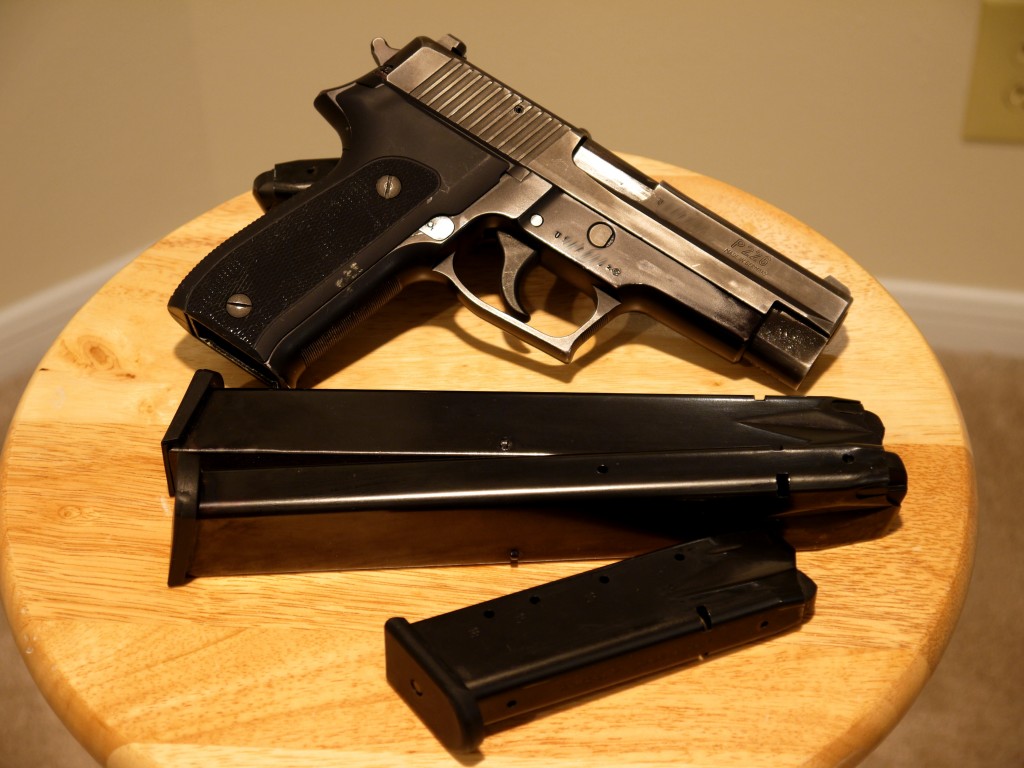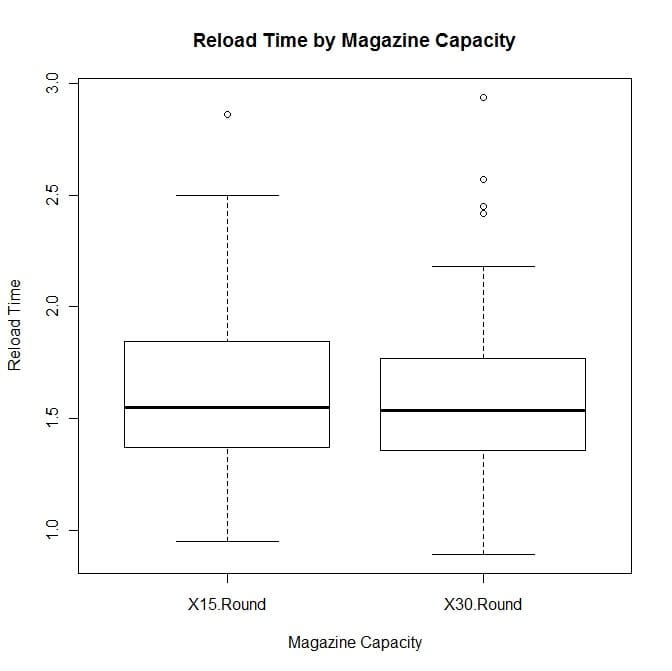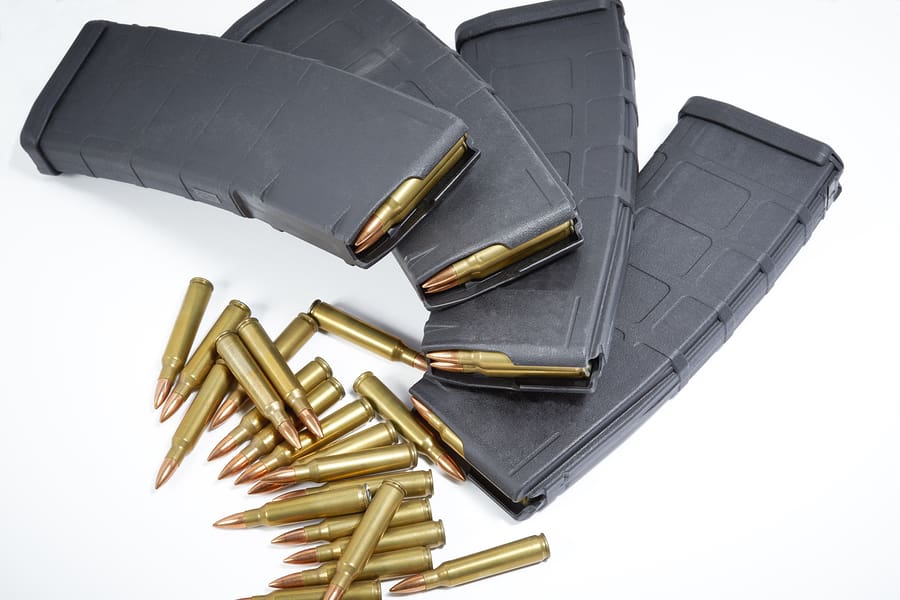 “High Capacity Magazines” are all the rage these days as a target for new legislation. The claim is that these magazines make it easier for “spree killers” to injure a larger number of people because the shooter doesn’t have to reload as often. Over the course of the next few weeks we’ll be putting some of the supposed benefits of these high capacity magazines to the test. The question today: Can you reload a high capacity magazine as fast as a factory capacity magazine?
“High Capacity Magazines” are all the rage these days as a target for new legislation. The claim is that these magazines make it easier for “spree killers” to injure a larger number of people because the shooter doesn’t have to reload as often. Over the course of the next few weeks we’ll be putting some of the supposed benefits of these high capacity magazines to the test. The question today: Can you reload a high capacity magazine as fast as a factory capacity magazine?
When the massacre in Arizona took place many people blamed the high capacity magazines for the death toll. Others noted that the killer was taken down only because he had trouble reloading these magazines, and (based on their experience) were of the opinion that trying to reload “high cap” magazines in fact slowed down the killer and allowed more people to escape. Larger magazines seem harder to feed into a pistol than the standard small ones, but there’s no data out there supporting that assumption. So we generated some data in search of the truth.
Test Procedure
Test participants were asked to reload a semiautomatic magazine fed pistol as fast as possible using two different size magazines, one which was of the same dimensions as the magazine issued by the factory (15 rounds) and another which had a 32 round capacity. Participants were issued two magazines of each size, one belt holster for a magazine, and one snap cap dummy round. Participants placed the holster on their belt on the reaction (non-dominant) side of their body, and placed one of the magazines in the holster with the dummy round loaded. The corresponding magazine was placed in the SIG SAUER P226 pistol which they were handed at the start of the test.
Participants were asked to lock the slide on the pistol to the rear with the empty magazine inserted to simulate a pistol which had run out of ammunition, and held it at arms length as if firing. Using an IPSC timer on a random delay, at the sound of the buzzer the participants attempted to reload the pistol as fast as possible using the magazine on their belt. The reload was timed from the buzzer going off to the slide slamming forward on the new magazine. The dummy round was used to relieve the tension on the slide stop normally applied by the follower in an empty magazine.
After recording a sufficient sample of reload times using one size magazine, the other size magazine was substituted and testing resumed. This procedure was followed for multiple participants with varying levels of proficiency.
The IPSC buzzer’s random delay was introduced to try to induce a certain level of stress in the participants. While this level of stress is nowhere near the level present in an active shooter situation, it is assumed that any added stress which would induce the shooter to drop a magazine during a reload would be just as likely with a factory length magazine as a high capacity magazine.
Results
By the end of the testing over two hundred and twenty data points were collected from a number of participants. These numbers were normalized to eliminate the possibility of a single participant skewing the results due to slower reload speeds than the average and plotted in a boxplot.
According to our results and keeping the assumptions in mind, reloading a high capacity magazine does not appear to take longer than reloading a factory capacity magazine. In fact, it may actually be quicker by a fraction of a second.
That’s one question down, but others remain. Does longer periods of uninterrupted firing mean the shooter will get tired faster and miss more than if they needed to reload more often? How reliable are these high capacity magazines? Can you shoot as fast with a high capacity magazine as with a factory capacity magazine? Stay tuned.





I have many high capacity magazines for my weapons-8 32 round mags for my beretta 90-TWO and CX4 Carbine being an example. I don’t worry though, because they are not high capacity CLIPS!
I wonder if the results would be any different if the mags had actually been loaded. Perhaps a heavier mag (32 rounds vs 15) would be more difficult to manipulate?
We’ll get there.
We’ve now determined that shape doesn’t matter, weight is up next.
Did you have them do the standard capacity magazines first and then the high-capacity magazines next? Or was it random?
Random. Some did normal then high, some did high then normal, some did 1/2 the normal runs then 1/2 the high runs then back and forth again. I tried to mix it up as best I could so that the “practice” variable wouldn’t offset the results.
I don’t know about the speed, but the woman in Tuscon was able to grab the magazine because of the extra length/leverage.
As a scientist by profession, I have to say I am cringing at this study. Not because the results run counter to what I have experienced (though they do), but rather because several serious variables were omitted in the test.
The biggest problem is you have completely removed weight from the equation. Loading an empty magazine is far easier than loading a magazine at full capacity. In your test case the weight difference between the two magazines would be negligable, so other factors would play a much larger role than they normally would, thus completely skewing the results.
I know safety has to be the number one concern, but you have to find some other means of conducting the test where the weight of the replacement magazine more accuratly reflects the actual weight of the magazines fully loaded.
After all, snap caps themselves are really light compared to an actual round, and no one reloads their weapon with an empty magazine when it matters.
My suggestion is to find someone who reloads and have them make some inert rounds by filling the casing with sand instead of gun powder and using used or otherwise inert primers. Then have these rounds clearly marked in a way that ensures they are always identifiable and can in no way be mistaken for a live round or worse have a live round be mistaken for them. A moderatly skilled reloader should be able to do this, and should be able to get it withen the weight range of actual rounds. If you do get these rounds, save them as they will come in handy in future tests as well.
Then, just to be certain, you could and should use the snap cap as the last round loaded into the mag (first to get chambered).
Run your test again under these conditions and I think you will find the results to be completely different.
Yep, on the list of things to do.
I think that you need to try them with full mags… as Carl pointed out. 15 rounds is heavy, 32 rounds even heavier and I think that the weight of the clips plays a factor.
Nick:
I can press you out 50 rounds of inert 9mms (no powder or primers) if you want to re-run the test with weighted magazines. And if you don’t mind lead roundnose bullets.
Chris,
If you don’t mind I’d love some dummy rounds. Can you fill them with baking soda and hot glue the primer holes as well?
Did you run any tests with high-capacity assault clips?
How did you get the IPSC style timer to stop upon the slide closing?
I’ve been using this app on my Android phone – https://market.android.com/details?id=com.stimer
It has a variable sensitivity setting. At the highest setting it will trigger even from dry firing.
What were the characteristics of your subjects, and how many participated? It’s important to know who the “you” is in the research question from the first paragraph of the post.
It would help to see the distribution of the mean difference in reloading time (normal vs. hi-cap) by subject. Say exactly half the participants each reloaded the hi-cap in 2 seconds and the normal mag in 4 seconds, while the other half reloaded the hi-cap in 4 s and the normal in 2 s. This dataset would produce your box plot above, but there’s a lot more to the story.
I think if you’re trying to make a statement with regards to the shooting in Tuscon, you might use a Glock 19 instead of the Sig P226. Using a Sig just adds one more variable into the mix. Use full magazines with live rounds. “Do it live at a range.” Fire a few then do a magazine exchange. Make the test as close to reality as one can get.
Personally, I think most gun owners already recognize that limiting magazine capacity is ridiculous. Magazines can be swapped instantly by most people and have zero impact on crime. If its a test to be made, its purely for the uninformed person who knows little about our culture.
BTW – Would a non-gun owner be convinced by a test which uses any other handgun besides a Glock 19 and/or kydex belt pouches (vs magazine filled pant pockets)? Would such a test even make a dent in that particular mindset?
As a side note, its my understanding that Loughner had a malfunction near the end of his first magazine. Lack of spring compression perhaps resulting in a jam (aftermarket mags can be prone to failure). Since clearing a malfunction reflexively wasn’t in the shooter’s skill set he probably had an ‘oh darn’ moment looking down at his double feed, stove pipe, or failure to feed. It was that jam which gave bystanders the time necessary to subdue him. So high capacity magazines may very well have SAVED lives in that case. And/or his magazine was caught in his clothing. I’ve read both the malfunction and clothing as possibilities, but i’d garner non gun owning journalists wouldn’t know one from the other.
I think they meant “reload as frequently”